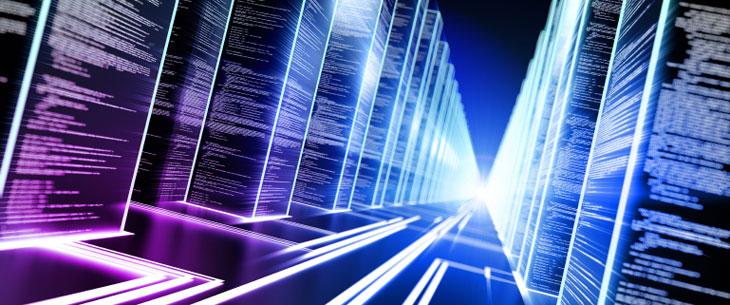Information Systems
Bài đăng này đã không được cập nhật trong 4 năm

INFORMATION SYSTEM (IS)
Information systems can be defined as a set of components for storing, collecting and processing of data. Various business organizations rely on these systems to carry out their operations such as distributes data to their customers and manage large operations. Various large companies such as Google, eBay, Amazon, New York Times are entirely built around information systems, user also rely on information systems for socializing, banking and getting information from the internet every day. After the invention of the World Wide Web, information systems began to expand as individual users could now access information stored in computers located in different locations and connected by the internet.
Information Systems are all around us. We see them everyday in our daily lives, from the store where we go to purchase goods and services to the bank and other computerized organizations. It makes processing, storing and manipulations of data easier, faster and smoother for us all.
Components of Information Systems
1) Hardware
The hardware of information systems constitutes of various devices such as computers, phones, tablets, solid state drives and various other peripherals used in the world of computing. Nowadays, everyone can easily afford this hardware unlike many years ago when the only people that had access to computers were scientist and the richest people. The price and performance of these hardware have rapidly decreased and performance increased over the past year, now u have the power of a full computer right in the palm of your hands and the processing power will continue to increase in years to come.
2) Software
- Computer software**
These are Operating system installed on the computer that provides GUI for the user to input commands and perform various commands. Windows installed on machines serves as the operating system to handle various operations of the system or interaction from the user. Another example of operating system is Android, IOS, Windows phone and many more installed on mobile devices so that they can be operable. As we as humans do not speak in computer language which is binary (1 and 0), the operating system handles the way we communicate with our devices by converting binaries to understandable language and vice versa.
- Application software**
These are programs installed on user smart phones, computers and devices/electronics. In short software is meant to be installed on the hardware to enable communication between the user and the machine. These programs are all different and serves different purposes, for example Windows Office installed on a machine will let u create spreadsheet, notes or powerpoint while Angry birds installed on your mobile phone lets you play a fun game. The application software aims to take full advantages of the hardwares and deliver some programs that give users awesome experiences and perform tasks.
3) Telecommunications
These are networks used to connect computers and other devices for the purpose of transmitting data across. The connection makes use of either wired connections (using fiber optic cables or coaxial cables) or wireless connections (such as wilan, wifi or any other means that uses radio frequencies) to connect devices to the internet.
4) Database
Databases are simply a means of storage for interrelated and organized information or group of records can be easily stored and retrieved on demand. There are various types of databases such as relational database like Sql, MySql and non relational database such as NoSql. Most information system has a database in a data warehouse where they store various information to be accessed by the customer at any time and place.
5) People and Procedures
People are basically the individuals who work in the field of information systems. This includes business analysts, programmers, database administrator, and users. Procedures are the policies that govern the operations of a computer system. As software is to hardware, a procedure is to people.
Types of Information Systems
- Operations Support Systems
- Transaction Processing Systems
- Process Control Systems
- Enterprise Collaboration Systems
- Management Support Systems
- Decision Support Systems
- Management Reporting Systems
- Management Information Systems
- Executive Information Systems
Information System Development
Large Organizations make use of Information System technology. The system can be develped by the IT team in house or by hiring other companies to provide the system. Like some various other types of systems, IS are build by adopting various development standards such as Software Development Life Cycle (SDLC) and various forms of methodlogy are applied to get the job done. It all depends on the company standards and team to apply this into the development process.
All rights reserved